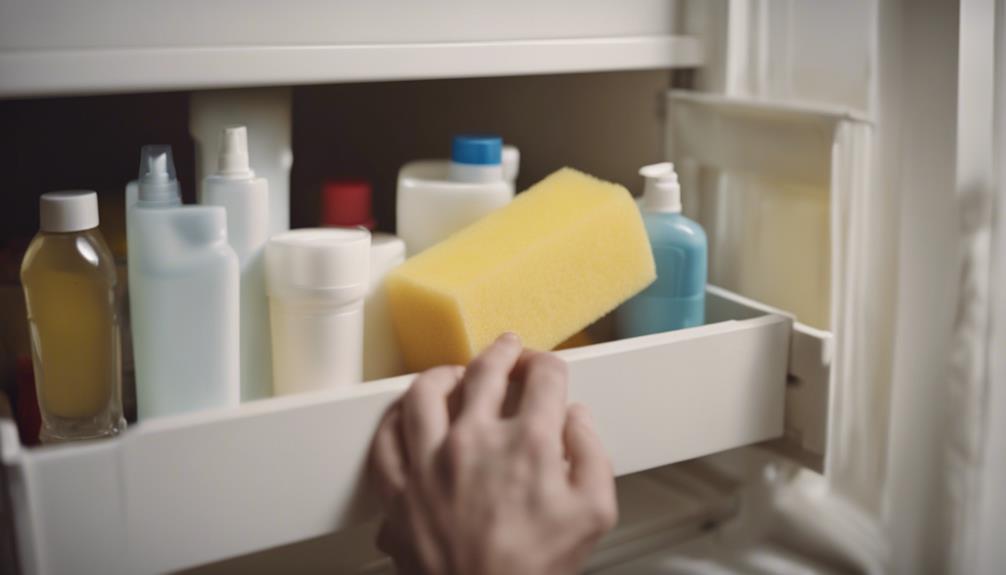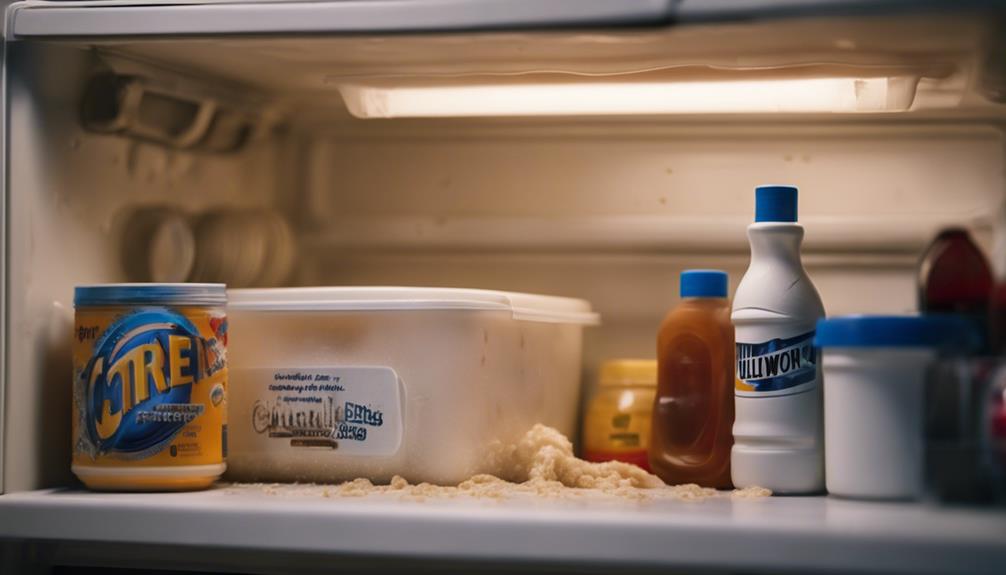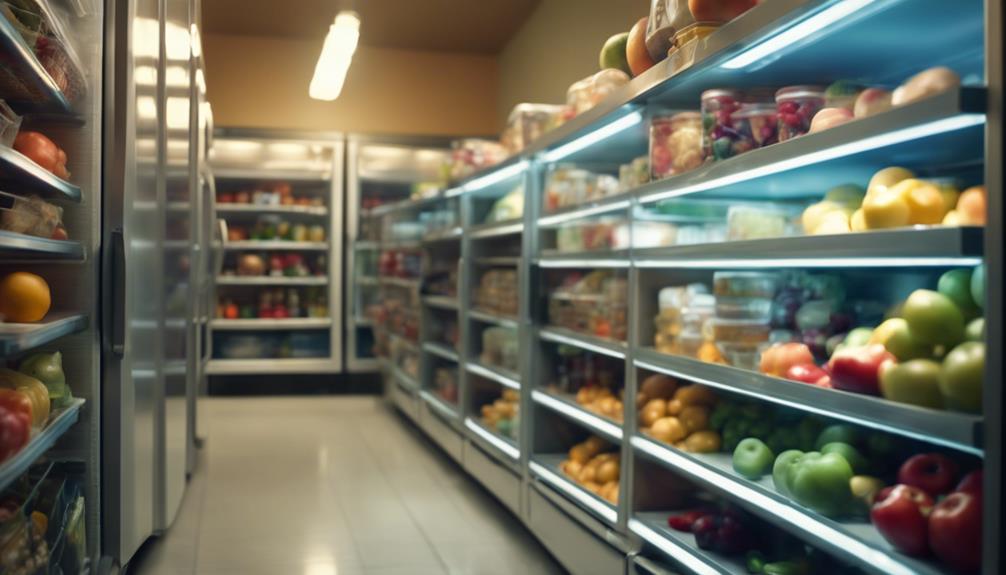You've opened your fridge to find expired or spoiled food, sticky shelves, and mysterious smells – it's time to clean! Start by removing all contents, then purge expired and spoiled food. Next, clean shelves and drawers, and sanitize interior surfaces. Eliminate stubborn stains and clean the exterior and exterior parts. Finally, organize and restock your fridge with fresh groceries. Follow these 7 steps to transform your fridge into a hygienic and organized space. To get the most out of your cleaning session, let's delve deeper into each step to guarantee your fridge is spotless and fresh.
Remove All Contents
Begin by emptying out the fridge completely, placing all contents into a box or onto a countertop, and take this opportunity to review expiration dates and your condiment collection. You'll be surprised at how many expired or unused items you've accumulated.
As you empty the fridge, separate perishable items like meat, dairy, and eggs, and store them in a cooler with ice packs to keep them cool during the cleaning process. This is essential to prevent spoilage, following the 2-Hour Rule.
Remove any dried-out herbs and crumbs that have accumulated on the shelves and walls. Use a soft brush or a cloth to sweep them out, ensuring a clean slate for the next step.
Remember to check the expiration dates of your condiment collection, and consider replenishing or replacing them as needed. By emptying and reviewing your fridge's contents, you'll be able to give your refrigerator a thorough clean, making the rest of the process much smoother.
Purge Expired and Spoiled Food
Take a close look at each item's expiration date, and get rid of anything spoiled, expired, or questionable, as these can quickly turn your fridge into a breeding ground for bacteria and unpleasant odors.
You'll be surprised at how many items are past their prime. Use a trash bag to easily discard old items, and remove condiments that are no longer good. Don't hesitate to throw out old or expired food, as it's better to be safe than sorry. Purging expired food helps prevent odors and maintains a clean fridge.
As you're cleaning, be mindful of spills and stains that may have occurred due to expired or spoiled food. Cleaning your fridge regularly can help prevent these issues from arising in the first place. By removing expired food, you're taking the first step towards a cleaner, fresher fridge.
Clean Shelves and Drawers

Pull out the shelves and drawers from your fridge to give them a thorough cleaning, as they can harbor hidden spills and stains that contribute to unpleasant odors. Remove any food debris and wash them with warm, soapy water. For tough stains, use a non-abrasive scrubber sponge to gently scrub them away. Rinse the shelves and drawers thoroughly to make certain no soap residue remains. Dry them with a microfiber cloth to prevent water spots.
For any remaining tough stains, let the shelves and drawers soak in warm water with mild dish soap for a few minutes. Then, scrub them clean with the non-abrasive scrubber sponge. Rinse thoroughly and air dry to prevent water spots. This will ensure your shelves and drawers are clean and free of any lingering spills and stains. By doing so, you'll eliminate any unpleasant odors and keep your fridge smelling fresh.
Sanitize Interior Surfaces
Now that you've cleaned and sanitized your shelves and drawers, focus on sanitizing the interior surfaces of your fridge to eliminate any remaining germs and bacteria. To do this, mix a solution of vinegar and water, which is a natural sanitizer that effectively kills bacteria and germs.
Here are some key steps to follow:
- Wipe down all interior surfaces, including walls, floors, and ceilings, with the vinegar solution.
- Guarantee all nooks and crannies are thoroughly wiped down to prevent any areas from being missed.
- Regular sanitization of the fridge interior helps prevent the growth of mold and mildew.
- By sanitizing the interior surfaces, you promote a clean and hygienic food storage environment.
Eliminate Stubborn Stains

You'll need to tackle any stubborn stains that have accumulated on the fridge's surfaces, as they can harbor bacteria and create unpleasant odors. To eliminate these stains, mix baking soda and water to form a paste. Apply this paste to the stained area and let it sit for a few minutes. Then, use a damp microfiber cloth to wipe away the stain.
For tougher stains, consider using a Magic Eraser on plastic surfaces. If the stain is particularly stubborn, let the baking soda paste sit for a longer period before scrubbing.
When scrubbing, use a microfiber cloth and hot water to help break down and remove the stain. Avoid using harsh chemicals that can damage the interior of your fridge. Instead, opt for a gentle cleaning solution or hot water and a microfiber cloth to deep clean the area.
Remember to wipe down the shelves and walls thoroughly to remove any remaining residue. By following these steps, you'll be able to eliminate stubborn stains and leave your fridge's interior surfaces clean and fresh.
Clean Exterior and Exterior Parts
Cleaning the exterior of your fridge requires attention to detail, as dust, grime, and fingerprints can quickly accumulate on the surfaces. To keep your fridge looking its best, you'll need to clean the exterior regularly.
Here are some tips to keep in mind:
- Use a mild cleaning solution and a microfiber cloth to clean the exterior of your fridge.
- If you have a stainless steel fridge, you may need a specialized stainless steel cleaner to achieve a shiny finish.
- Don't forget to clean the top of the refrigerator, as dust and grime can accumulate there.
- Pay attention to the door handles and buttons when cleaning the exterior parts of the fridge.
Organize and Restock

As you open the freshly cleaned fridge, organize its contents by categorizing items and placing frequently used ones at eye level for easy access. This will make it easier to find what you need and reduce clutter.
Next, restock the fridge with fresh groceries, making sure to place raw meats on the bottom shelf to prevent cross-contamination with other foods. Consider using clear storage containers to keep fruits and vegetables visible and fresh.
Don't forget to label leftover containers with dates to track freshness and reduce food waste. As you restock, take the opportunity to rotate items regularly, ensuring older products are used first. This will help maintain a well-organized fridge and prevent expired foods from going to waste.
Conclusion
You've done it! Your fridge is now sparkling clean, like a freshly fallen snowflake on a winter morning.
You've tackled the mess, wiped out the grime, and restored order to the heart of your kitchen.
Take a step back, admire your handiwork, and bask in the satisfaction of a job well done.
Your kitchen is now a healthier, happier place, and you're the master chef of cleanliness!